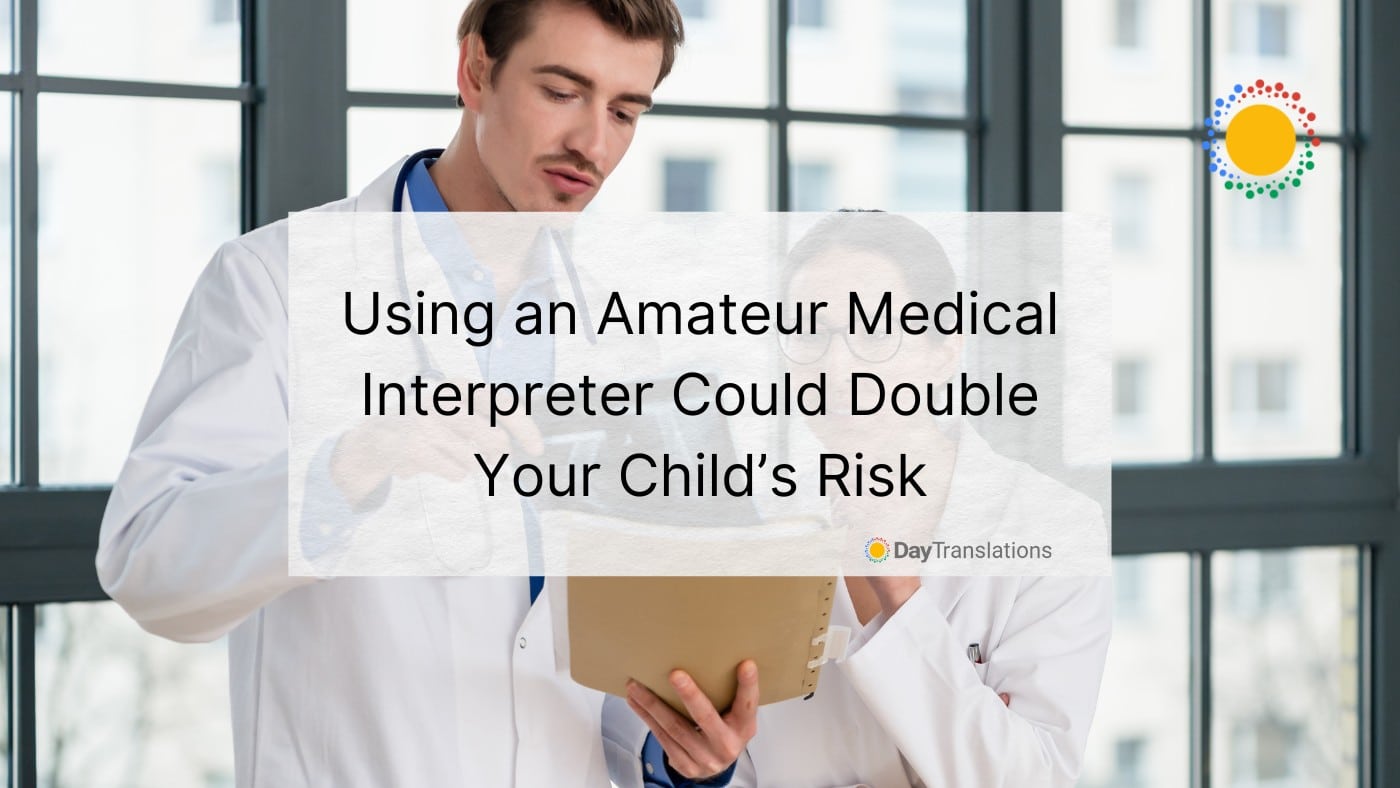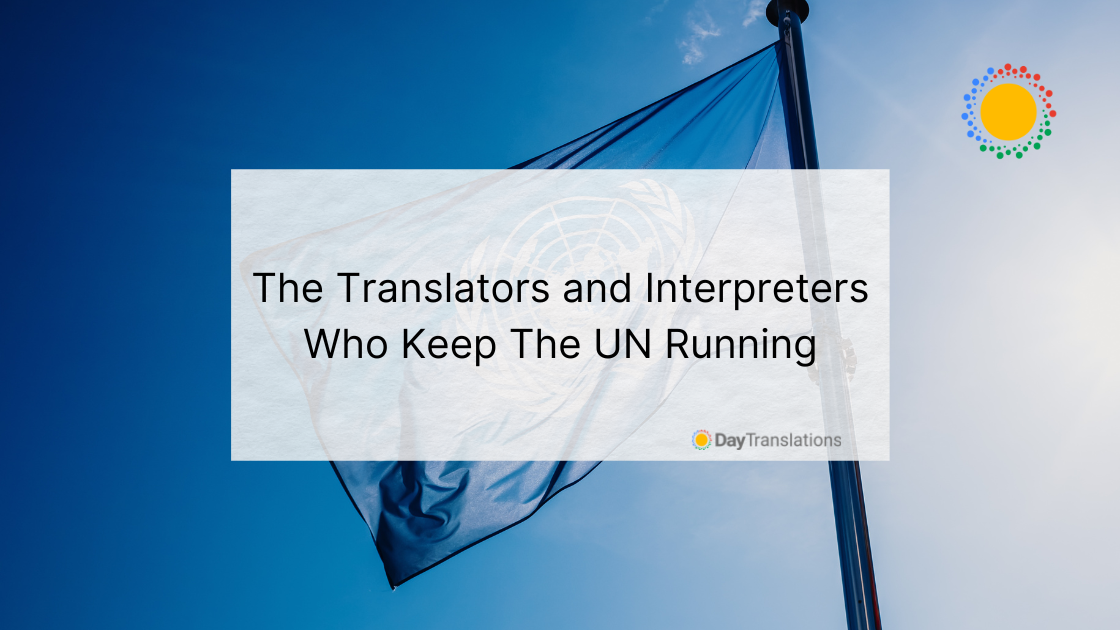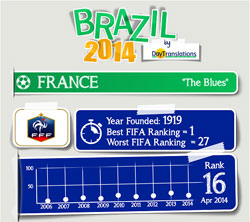Being a medical interpreter involves a lot of responsibility. That’s why they’re professionally trained. Nowhere is this more apparent than in an emergency room, where communication is rapid and lives hang on moment-to-moment decisions. And nowhere is such rapid communication more urgent than a pediatric ER, where the lives are those of children.
But even in a pediatric ER, families of patients sometimes opt to have an amateur do the interpreting. This might be a family member, a friend, or a bilingual staff member who happens to be around.
Unfortunately, research reveals that leaving the job to anyone other than a professional medical interpreter nearly doubles your risk of clinical mistakes.
Related Post: How Medical Interpreters Change People’s Lives
An Amateur Medical Interpreter Doubles Risk of Clinical Errors
Limited English proficiency is a reality for many American families. An estimated 25 million Americans say they speak English less than ‘very well,’ and over 60 million speak a non-English language as their mother tongue. This can complicate matters like insuring accurate and quality treatment of children in the ER.
In a study published by the Annals of Emergency Medicine, researchers surveyed 57 Spanish-speaking families in the two largest pediatric ERs in Massachusetts. They looked at situations where a patient needed a Spanish to English interpreter.
Some patients had a professional interpreter. Others used an ad hoc interpreter instead, such as a family member or a bilingual staff member. Still others used no interpreter at all.
Interpreting in real time means mistakes will occasionally happen, even for professionals. Some interpretation errors are benign. But others can have clinical consequences to the child, like prescribing the wrong medication or dosage.
Of the translation errors observed, 22 percent were likely to have such clinical repercussions–but only when using an ad hoc interpreter like a family member. When using a professional interpreter, it dropped to only 12 percent. Life-threatening mistakes were nearly half as likely with a professional interpreter.
No Interpreter is Better (But a Professional is Best)
When using no interpreter at all, the frequency of dangerous errors was actually lower than when using an amateur. It went down to 20 percent from 22. Lead researcher Dr. Glenn Flores, MD, FAAP, of the University of Texas Southwestern Medical Center in Dallas, told Reuters:
“The findings document that interpreter errors of potential clinical consequence are significantly more likely to occur when there is an ‘ad hoc’ or no interpreter, compared with a professional interpreter.”
Previous to this study, it was unclear how well professional interpreters performed against ad hoc interpreters. But the study shows the considerable importance of using professional interpretation services in medical situations, especially when a child’s health is on the line.
Hospitals that receive federal funding are legally obligated to provide translation services of some kind for patients. Sometimes this is phone interpretation, or a face to face interpreter. Find out what translation or interpretation services are available to you, and make use of them.
Training, Not Experience, Makes a Medical Interpreter
The study concludes by saying that more hours of training lower the interpreter’s likelihood of erring. It adds that years of experience does not significantly lower the likelihood of professional errors. Thus, researchers suggest requiring 100 hours of training or more for every professional medical interpreter.
“One hundred hours of training seemed to be the tipping point for professional medical interpreters,” said Dr. Flores. “Professional interpreters who received that much training on average had 12 errors while those with less training had 33. Patient encounters that relied on ad hoc interpreters or no interpreters had significantly more errors, including some with potential clinical significance, such as mistaking tablespoons for teaspoons of medicine.”
If you’re looking for your own medical interpreter, find someone with more hours of training, not more years of experience. This, researchers argue, will improve quality of healthcare and patient safety.
Related Post: The Demand for 100% Accuracy in Medical Translation
The Cost of Amateur Interpretation
There are many documented cases where clinical interpretation mistakes have lead to mistreatment, misdiagnosis or even death. These mistakes are painfully avoidable.
If a bilingual hospital staff member makes such a mistake, the hospital is legally liable. But legal accountability can’t undo such mistakes. It’s better to avoid them altogether.
Difference Between a Bilingual Employee and Medical Interpreter
The National Board of Certification for Medical Interpreters has strict requirements for becoming a certified medical interpreter. These include:
- A minimum of 40 hours of training in medical interpretation
- Demonstrated proficiency in English (e.g. a college degree from an English speaking country, high test scores on internationally recognized English tests)
- Demonstrated proficiency in the target language (e.g. a college degree in the target language, high test scores on an internationally recognized language test)
- Passing the rigorous NBCMI exam
- After passing the exam, a medical interpreter often puts in hours of volunteering or interning before becoming a true professional
Related Post: Guide to Becoming a Certified Spanish Hospital Interpreter
A medical interpreter’s focus is on linguistic excellence. Even as they tailor their expertise to a medical setting, their primary focus is language and accuracy.
A bilingual hospital staff member doesn’t have the same area of focus. Where a bilingual staff member’s goal is medical excellence, a medical interpreter is primarily concerned with seamlessly connecting the patient and doctor through language. Even a good medical professional can make amateur linguistic mistakes. Here are some other key differences:
Different Meanings of Professionalism
Professionalism means different things for different professions. A good hospital staff member has a warm, supportive bedside manner. This means they’re good at making the patient and the patient’s family feel at ease. This strength as a medical practitioner, however, is not a strength as a medical interpreter.
A medical interpreter is trained to be focused and personally divested at all times, so that not a word is lost. A good medical interpreter detaches herself from the situation in order to efficiently facilitate communication.
If an interpreter seems too friendly, the patient or doctor may suspect that they’re introducing a bias or their personal opinions into the equation. Where a doctor or a nurse connects with the patient one-on-one, a medical interpreter never does so. This could threaten the neutrality of the medical interpreter’s position.
Accuracy and Memory
There are many ways to translate any given phrase. A bilingual employee might be relaxed about how to translate a phrase, using whatever translation is most common or convenient.
A professional medical interpreter will find the most accurate phrase to suit the context, while also replicating the speaker’s tone and cadence. Small differences in translation may go unnoticed to the layperson, but the implications can have serious repercussions.
A professional medical interpreter is also trained for sustained concentration and short term memory retention. It’s not easy to retain what a speaker is saying, while simultaneously translating it and speaking to the third party as well.
An amateur will fumble this process easily when their concentration slips, but a medical interpreters is prepared for such demands.
When a situation is urgent and the pace of conversation is rapid, as with many conversations in the ER, the focus and accuracy of a medical interpreter are paramount.
Standards of a Medical Interpreter
The profession of medical interpreter is a specialized field with specific standards of conduct. For example, an interpreter never engages in side conversations for clarification. They speak in the first person. If the doctor says “I recommend,” the interpreter says “I recommend.”
A bilingual staff member is unaware of such standards. They may translate by saying “The doctor says she recommends…”, in which case strict accuracy is already compromised. Amateurs commonly engage in side conversations, which confuses the process and dilutes the efficiency of translation. Not knowing the federal industry standards, they cannot deliver upon them.
Related Post: Medical Interpreters vs Bilingual Employees: 5 Main Differences
The Cost of a Professional Medical Interpreter
Often times, families rely on the help of a well meaning amateur because they’re shying away from the cost of a professional medical interpreter. But hiring a medical interpreter doesn’t have to be expensive.
If the hospital does not provide one, you can always get a phone interpreter as a less expensive option. Though the cost is lower than a face to face interpreter, a phone interpreter is still exponentially safer and more reliable than a bilingual staff member or family member.
A good language services provider will give you plenty of options for dispatching a face to face or a phone interpreter. They should be HIPAA compliant and fully insured. This removes any sticky questions of liability from the equation. It makes everybody’s role clear: the doctors and nurses practice medicine, the medical interpreter handles accurate translation, and the family supports the patient through the healing process.
When the doctor’s orders are clear, the patient’s healing process has a higher success rate. And when you hire a professional medical interpreter, the risk of a clinical error as a result of mistranslation is cut in half. You can rest a little easier during a hectic and difficult time and ensure the best possible care for your family.














Sorry, the comment form is closed at this time.